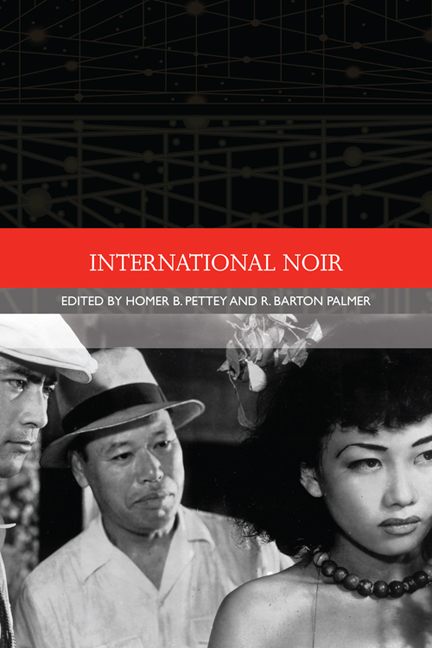Book contents
- Frontmatter
- Contents
- List of Illustrations
- Acknowledgements
- Notes on the Contributors
- Traditions in World Cinema
- Introduction: The Noir Impulse
- 1 British Noir
- 2 French Noir 1947–79: From Grunge-noir to Noir-hilism
- 3 French Neo-noir: An Aesthetic for the Policier
- 4 Early Japanese Noir
- 5 The Gunman and the Gun: Japanese Film Noir since the Late 1950s
- 6 Darker than Dark: Film Noir in its Asian Contexts
- 7 Nordic Noir and Neo-noir: The Human Criminal
- 8 Indian Film Noir
- 9 The New Sincerity of Neo-noir
- 10 Post-noir: Getting Back to Business
- Selected Bibliography of International Film Noir
- Selected Filmography of International Film Noir
- Index
1 - British Noir
Published online by Cambridge University Press: 05 August 2016
- Frontmatter
- Contents
- List of Illustrations
- Acknowledgements
- Notes on the Contributors
- Traditions in World Cinema
- Introduction: The Noir Impulse
- 1 British Noir
- 2 French Noir 1947–79: From Grunge-noir to Noir-hilism
- 3 French Neo-noir: An Aesthetic for the Policier
- 4 Early Japanese Noir
- 5 The Gunman and the Gun: Japanese Film Noir since the Late 1950s
- 6 Darker than Dark: Film Noir in its Asian Contexts
- 7 Nordic Noir and Neo-noir: The Human Criminal
- 8 Indian Film Noir
- 9 The New Sincerity of Neo-noir
- 10 Post-noir: Getting Back to Business
- Selected Bibliography of International Film Noir
- Selected Filmography of International Film Noir
- Index
Summary
It was like living through a realistic nightmare.
James Hadley Chase, Flesh of the Orchid (1948)Anyone writing on British film noir has to confront not only the much-debated question of whether noir is a genre, a cycle or a sensibility but also that of whether, however it is defined, it is a uniquely American phenomenon (in which case, there may be no such thing as British film noir). There is no need to rehearse the arguments associated with the first question here, but it does have implications for identifying which (if any) British films should count as films noirs. Put simply, two basic elements figure in most definitions of film noir: 1) a corrupt and threatening urban setting in which crime is endemic, and 2) a visual style emphasising low-key lighting, deep shadows and unusual camera angles. The problem is that many films include one but not both of these elements, and most lists of films noirs accept many such films as bona fide examples. As Paul Schrader put it in 1972, in one of the first significant attempts to account for the phenomenon as it emerged in Hollywood during and after World War II, ‘How many noir elements does it take to make film noir noir?’.
In the case of British noir, an additional question would be: How far can a British film deviate from the Hollywood model, however that is defined, and still be considered noir? Most accounts of US film noir distinguish between the ‘classical period’, usually defined as running roughly from John Huston's The Maltese Falcon in 1941 to Orson Welles’ Touch of Evil in 1958, presenting a dark vision of American society in marked contrast to the positive outlook usually found in mainstream Hollywood cinema. These films are usually seen as symptomatic of the social upheavals caused by World War II and its aftermath, while a revival, generally referred to as ‘neo-noir’, beginning in the 1970s, is associated with the questioning of established values by the social movements of the late 1960s. During these same time periods, similarly dark films emerged from British cinema, but, while some of these films are quite close thematically and iconographically to the Hollywood films, others develop a recognisably ‘noir’ outlook in quite different forms. Much then depends on what constitutes a film noir.
- Type
- Chapter
- Information
- International Noir , pp. 14 - 35Publisher: Edinburgh University PressPrint publication year: 2014

